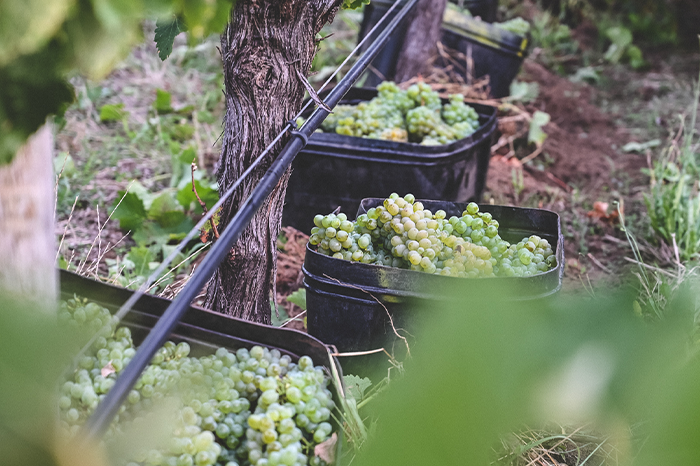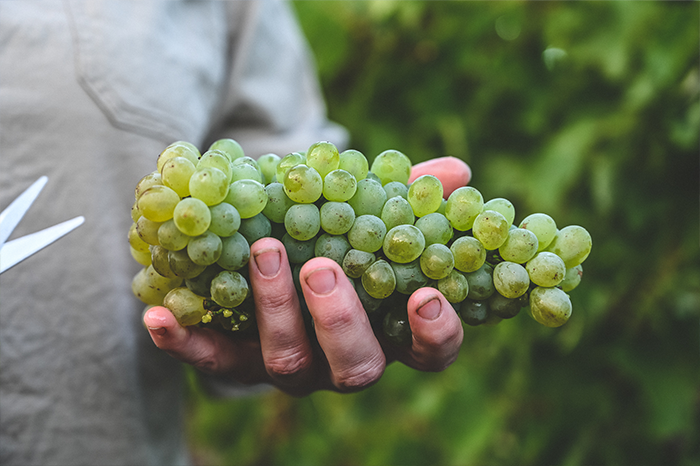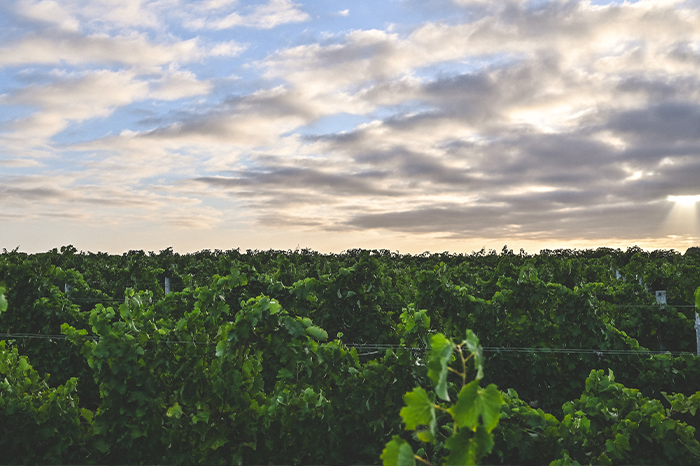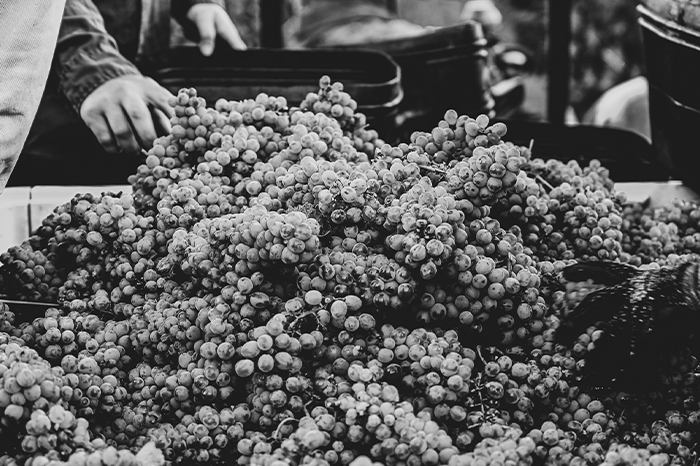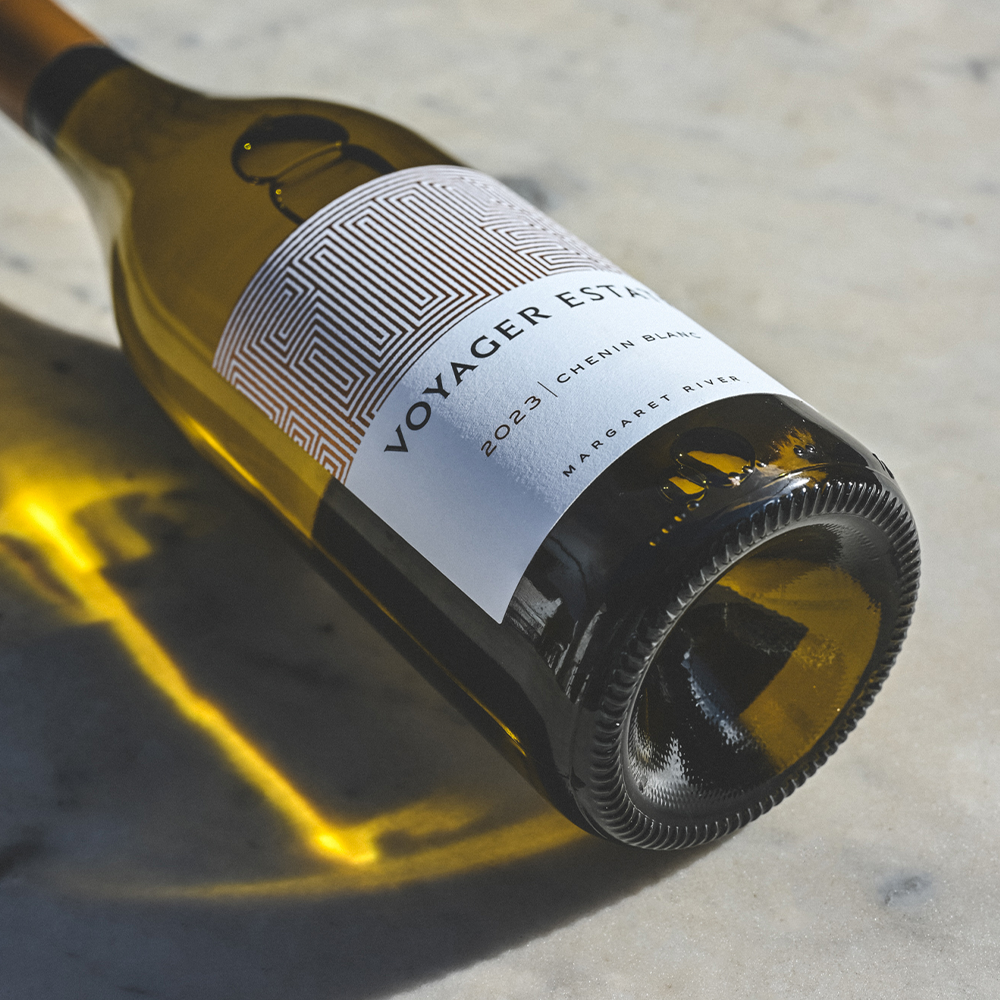DEMYSTIFYING CHENIN BLANC
Our Sommelier, Claire Tonon, dives headfirst into the enchanting world of Chenin Blanc, tracking its bumpy journey through history and exploring its many conundrums...
Truth be told, it’s rare that a visitor walks into the cellar door and asks for Chenin. Yet, once we get it into glasses, whether as a tasting, with a cheese board or paired to a dish (more on that later), it shines, it’s loved and respected. With this in mind, let's debunk a few of myths surrounding this oft-misunderstood variety.
Myth One – The Best Chenin Blanc comes from France
Let's begin by debunking the story that all the best Chenin comes from France. Ah, oui, the French do have a knack for making remarkable Chenins, you would hope so too, since it’s the birthplace of the variety!
A descendent of Savagnin on the grapevine family tree, it sits as a proud uncle (or aunt) to Cabernet Sauvignon. It was grown in the Loire Valley in Northern France as far back as the 1500s, possibly even earlier, although it would have been known as Plant d’Anjou back then. From its home in Anjou, where it had been growing for hundreds of years, it was propagated by the Mont-Chenin monastery, where it found its ideal climate and a new name; Chenin Blanc.
The grape has been continuously grown in the Loire Valley ever since, largely in the area between Savennières and Touraine. But in a very Chenin-like twist, it seems that until the 20th century, much of the Chenin sub-variety grown in the Loire, was in fact, the Portuguese variety Verdelho!
Some of the world’s most intriguing Chenin Blanc wines are the late harvest or botrytised wines of the Loire – Vouvray, Quarts de Chaume and Bonnezeaux. The climatic conditions there, together with meticulous work in the vineyards (often involving various passes to ensure that only the very ripest berries are picked) have helped develop a reputation for wines of concentration, notable acidity and long cellaring potential. While these appellations are up to 200km from the Atlantic Ocean, producers speak of its moderating influence creating stability, just the right amount of rainfall and above average sunshine.
Interestingly, these are the very same conditions that prevail in Margaret River, which could go some way to explaining Chenin Blanc’s success both in our region and in the maritime regions of South Africa where the variety found its second home. In fact, over recent decades, a growing group of Cape winemakers have been isolating old Chenin vines in suitable terroirs and transforming them into serious and age-worthy wines that challenge the greats of the Loire.
Chenin Blanc was likely one of the first grapes grown in South Africa, having been taken there by the Dutch East India Company as early as 1655. Historical documents refer to three varieties – Groendruif (Semillon), Fransdruif and Steen. Various generations and many Chinese whispers later, Steen became the preferred white variety in the country, accepted as a grape of Germanic origin. It wasn’t until 1963 that Professor C J Orffer, Head of Viticulture at the University of Stellenbosch matched Steen and Chenin Blanc leaves to finally clarify that Steen was, in fact, Chenin Blanc.
Closer to home, Western Australia has a reputation for producing some of the best Chenin Blanc in the country, with vine age an important factor. Here at Voyager Estate, we’re blessed with some of Margaret River’s oldest plantings dating back to 1978. These well-established vines flourish in our maritime climate, lending the wines exceptional natural acidity while providing abundant sunshine to achieve intense varietal character.
Myth Two – Wines made from Chenin Blanc are sweet
Ah, the elephant in the room – the sweetness myth. Yes, Chenin Blanc can be sweet, indeed it can produce those aforementioned lusciously sweet dessert wines. Must it be lusciously sweet to be exceptional? No, not at all. In fact, the majority of South Africa and Australia’s best examples exist in the dry or just off-dry spectrum. The variety has proven its adaptability and versatility to produce excellent wines in multiple styles, both still and sparkling, and at all sugar levels from liquoreux (the French term to describe a liquor-like syrupy sweetness) right through to bone-dry.
Two key factors are a play here – ripeness and acidity. When it’s allowed to fully ripen or even overripen, Chenin Blanc retains its inherent acidity which often requires winemakers to leave some residual sugar for balance. Much like the best German Rieslings, you may not notice this as sweetness, but simply as palate weight and fruit intensity.
As it ripens, Chenin Blanc develops a wonderful array of aromatic components that naturally appear softer and sweeter than many other wine varieties. Think honeysuckle, apple, pear, melon, quince, honey, even lavender, so even when there’s little or no sweetness, you still feel like you’re drinking something mildly sweet – “moelleux” as the French would say; or mellow!
Try this experiment to give you a better sense of sweetness:
Fill 3 glasses with water. To one, add nothing. To the second, add 1 gram of sugar (that’s just less than a quarter of a teaspoon, the equivalent to 4 grams per litre). To the third, add 2.5 grams (half a level teaspoon and the equivalent to 10 grams/litre). Mix well until the sugar has completely dissolved, then ask an unsuspecting partner, friend or even child to taste.
Most likely your 'guinea pig' will identify only one of the glasses as sweet; i.e. the glass with the 2.5 gram addition. That’s simply because the average threshold to discern sweetness is above 5-6 grams per litre.
Myth Three – Chenin Blanc only makes simple, fruity quaffers
Not true! Chenin’s acidity is often tamed to create a more balanced wine, so it stands to reason that the value of this variety is not all tutti-frutti. Indeed, it’s the grape’s acidity that has traditionally led to it being blended into the “classic whites” of old.
For modern producers who are committed to restricting yields to ensure quality fruit, this means that Chenin Blanc can become a winemaker’s 'blank canvas', allowing them to experiment through different avenues to build complexity, texture and interest in the wine. Time on skins, harder pressing of skins, solids in ferment, natural ferments, in oak or concrete or both, lees stirring, residual sugar or not…all the tricks of complex Chardonnay winemaking plus more can be explored through this more forgiving variety. It makes for exciting times for us, the Chenin Blanc-loving community!
Myth Four – Chenin Blanc is not an age-worthy variety
You've guessed it. Chenin Blanc has another trick up its sleeve – ageing potential. Well-made Chenin Blanc from ripe grapes can definitely age gracefully, developing an impressive depth and complexity over time. It’s no wonder, really. That natural acidity assures the longevity of fruit character while sugar acts as a preservative. A heavenly combination, especially since the aged characteristics of the grape are just as wonderful as those of its youth – baked apples, caramel, nutty marzipan, honey and spice and all things nice.
Myth Five – Chenin Blanc is a great aperitif, but not worthy of the main event
Since we’re already talking food, "Chenin Blanc is only good as an aperitif"….said no serious Chenin lover, ever!
For 12 years now, I’ve worked with our chefs to bring an ever-changing array of food and wine combinations to tables of the Voyager Estate Restaurant, and Chenin Blanc has always been a mainstay on our menus in one way, shape or form. Why, you ask? Well, quite simply because it’s infinitely versatile. Acid-sugar balance, lovely fruit notes, great texture, not too heavy, not too light. Chenin is the “just right” of the food pairing world. It rarely clashes and generally makes the dish look better for having Chenin Blanc by its side.
Adaptable and versatile Chenin Blanc has many friends in the food world and here’s just a few examples to get you started:
- Oysters or caviar – fresh acidity meeting salty ocean water can only show up the beauty of the fruit in a sparkling style Chenin Blanc, as well as the marvellous textures of these two ocean delights.
- Marron, scallops, prawns and fish with or without sauces – the small amount of residual sugar in an off-dry style Chenin Blanc holds its own against the sweetness of crustaceans, and this sweetness works equally well to tame the pungency of spicier dishes – think curries, peppery sauces, even kimchi.
- Vegetarians will have a field day with mushrooms (pardon the pun), butter-poached zucchini, cauliflower chawanmushi (ask me for the recipe), even cabbage. Think sweet and sour or that great classic of Germanic tradition, sauerkraut!
- A vast array of cheeses are a good match because having great natural acidity, Chenin Blanc cuts through the fat and with such likeable fruit notes, it is unlikely to clash. Why put dried apple or pear on your cheese board? To enjoy with a glass of Chenin!
- It also makes for a wonderful pairing to duck parfait, crispy skinned pork belly and game meats (for foodies with a functioning gallbladder).
A final note...
If you’ve made it this far, you deserve a medal for being a veritable Chenin Blanc lover, and I’m sure you can see where I’m heading. This is a mellow-fruited variety, with great natural acidity, and it can be made in all styles from sparkling to sweet. It can be experimented with to no end, both in the winery and in your kitchen. And, if you don’t want to embrace the adventure today, you can cellar it for another day, or year! The point is, we all need to drink more Chenin Blanc.
